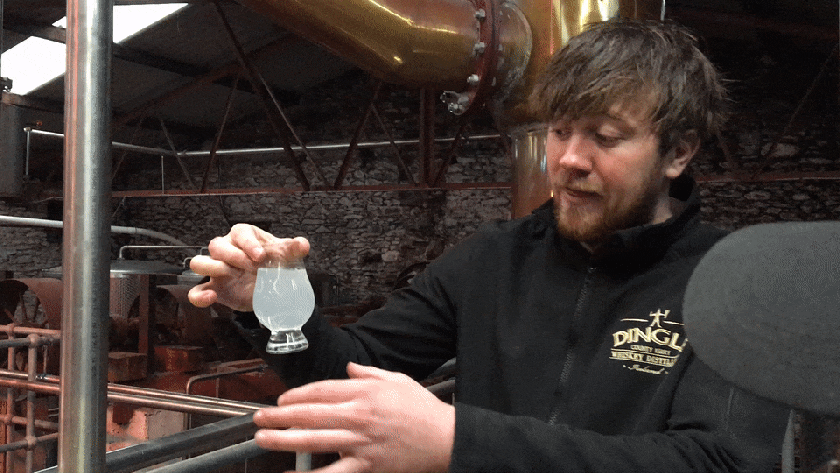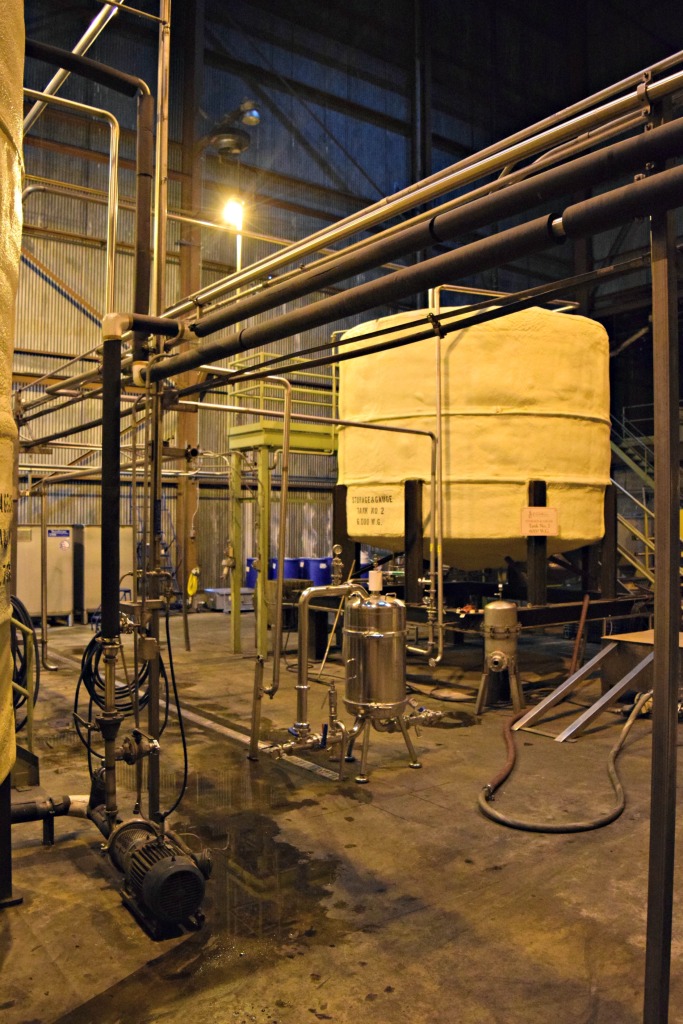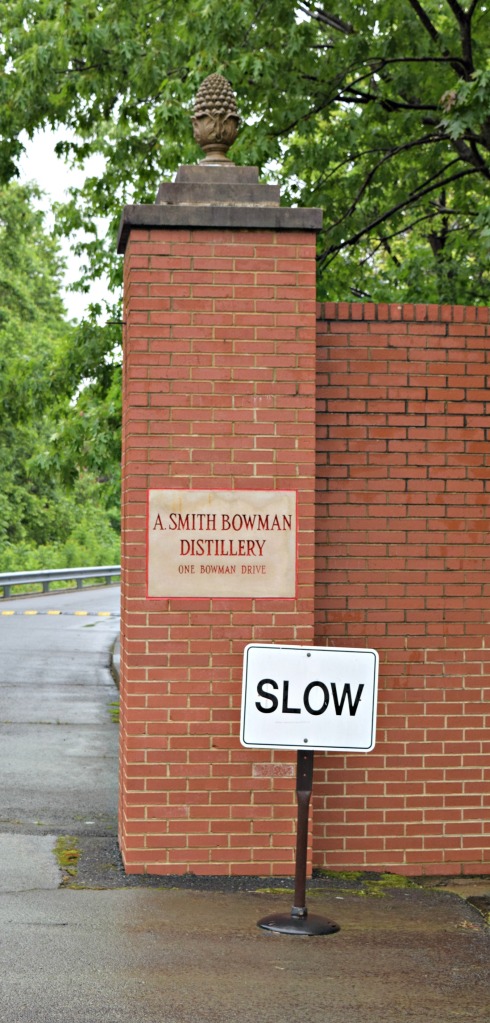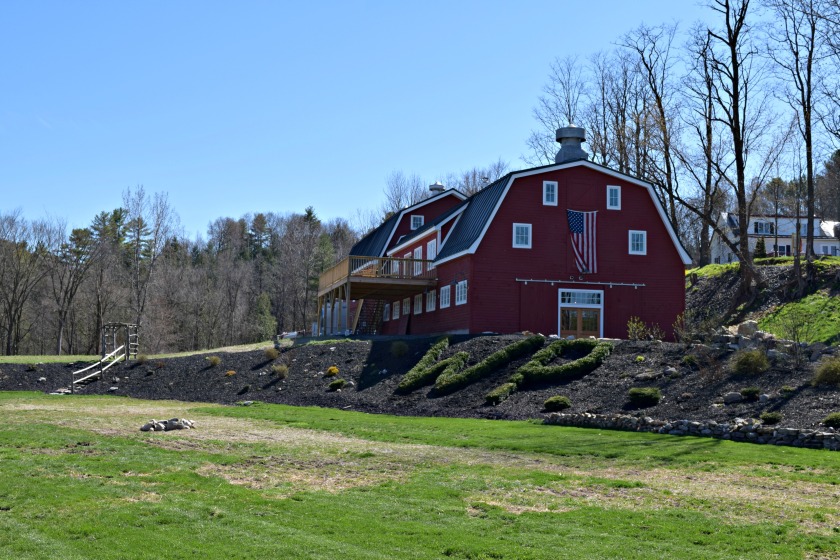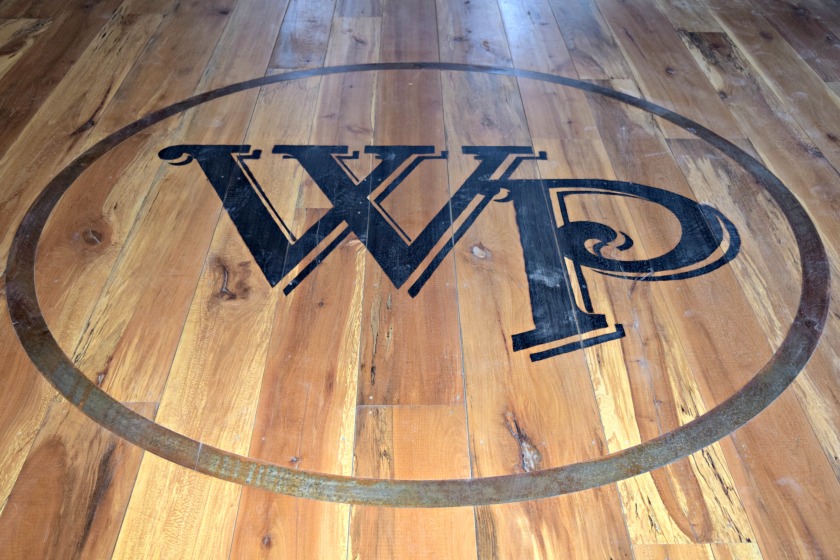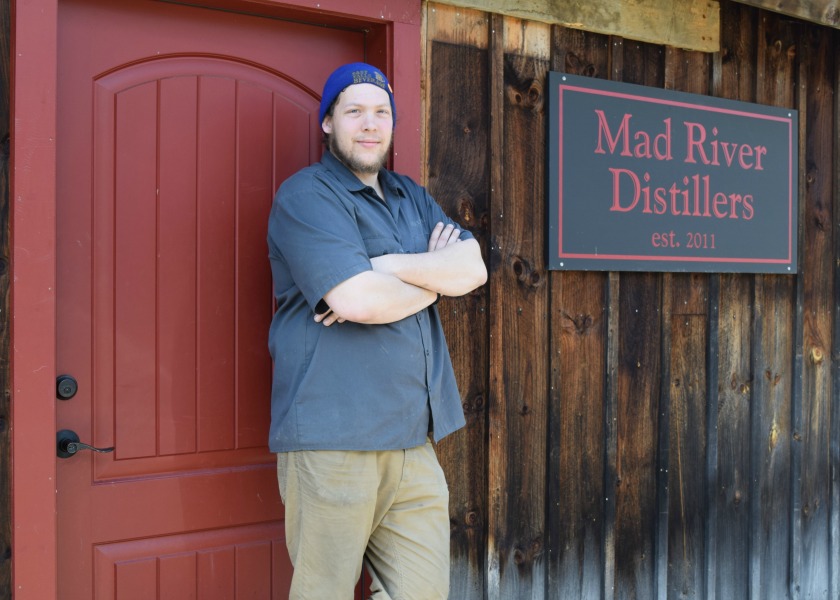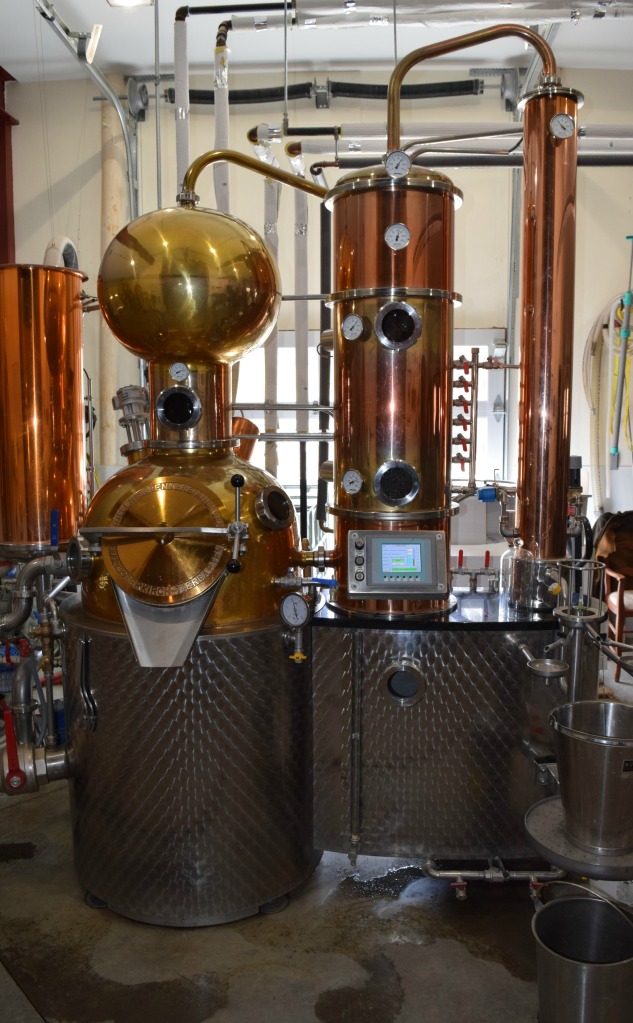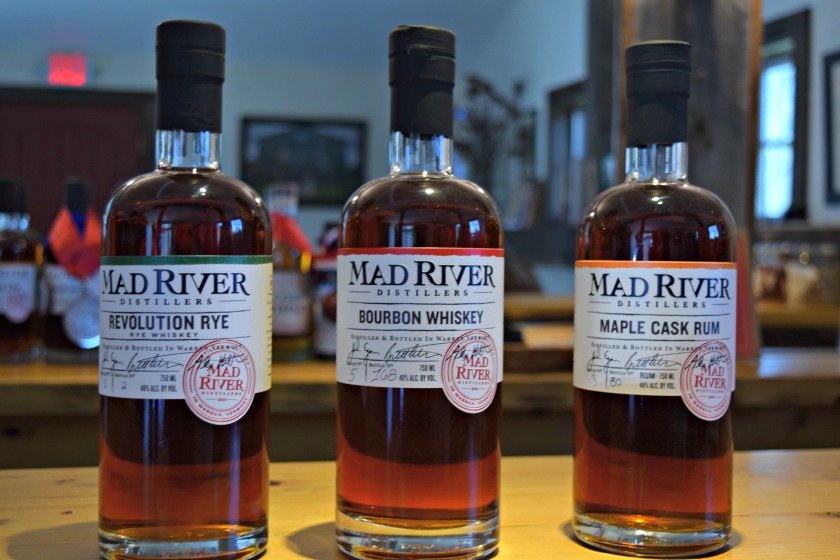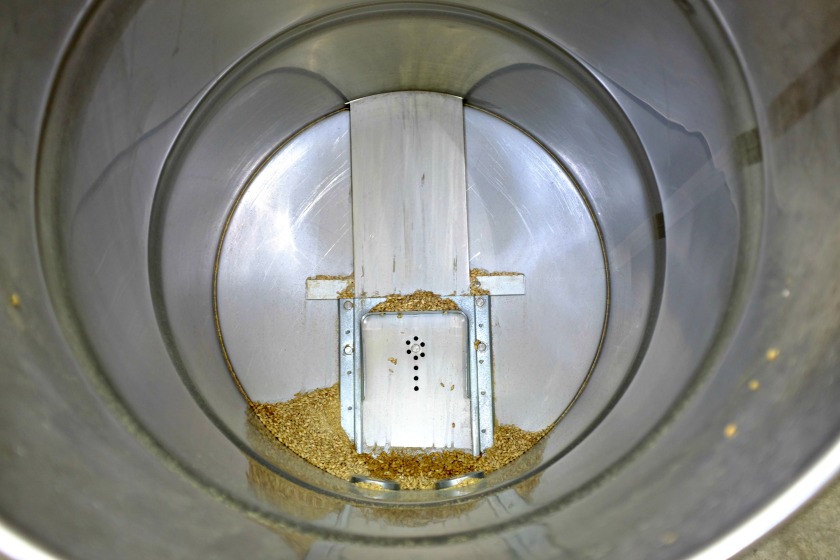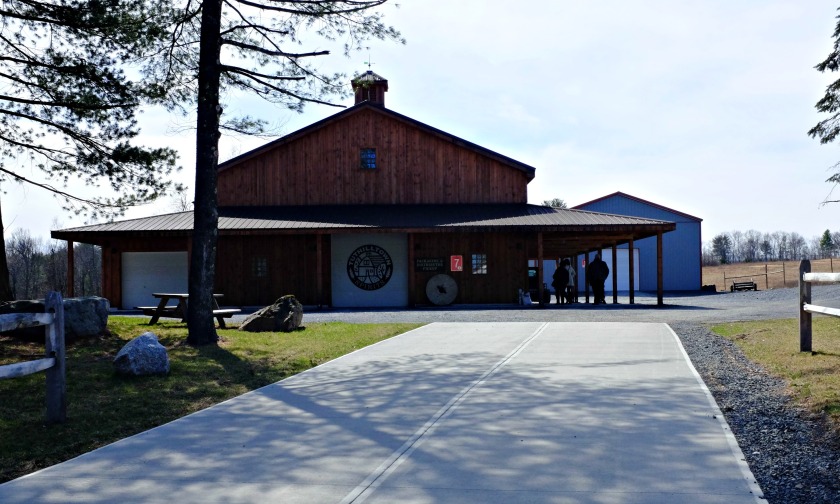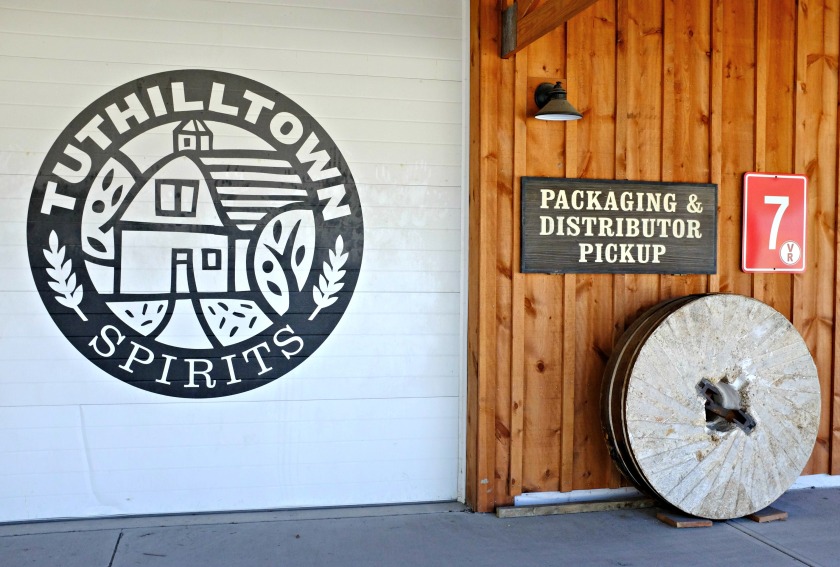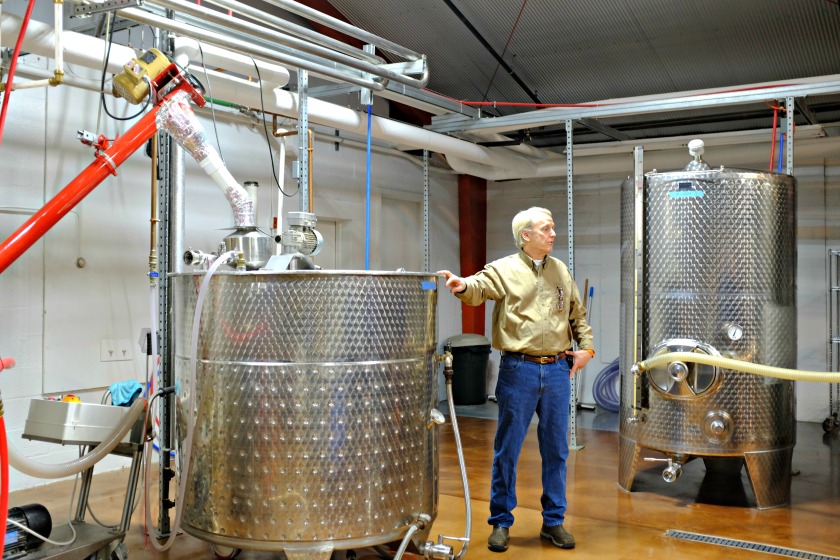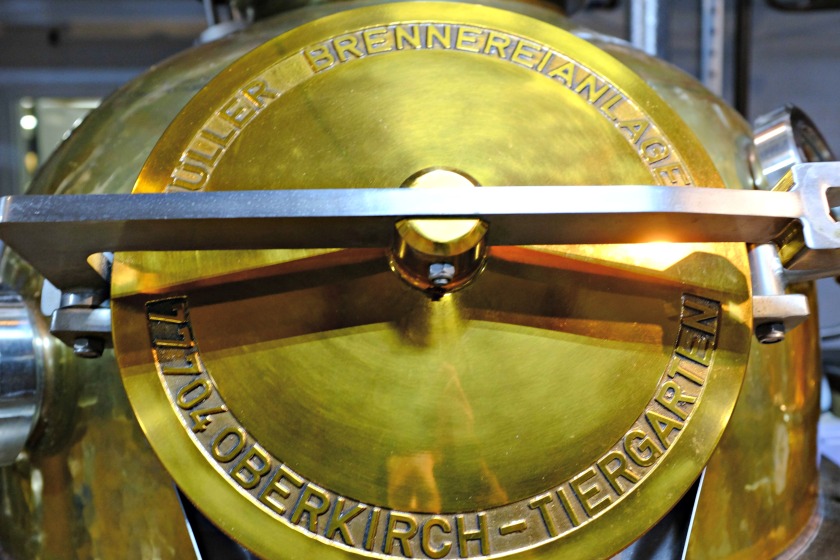The surging popularity of Bourbon and Rye in the past decade is partly due to the increasing numbers of people that visit Kentucky each year. These visitors gain a newfound appreciation of the history and dedication behind these spirits. The Bourbon Trail can please both the novice bourbon drinker and the bourbon expert alike with different tailored experiences at each distillery. Just recently I led the 9 Maple Bourbon Trail Tour with a group of 12 guests. For many of them it was their first experience and I am sure not their last.

Our group was based in downtown Louisville for 4 nights at the Embassy Suites which is in a very good location with access to everything.
Day 1
The group arrived on Wednesday throughout the day. Our first group get-together was not until the evening and this gave myself and a couple of others time to check out the new Angel’s Envy distillery and do a tour. This is a must stop in Louisville for anyone on the Bourbon Trail and for my future tours, this will definitely be included. It is a beautiful distillery and visitor experience. All $27 million can be seen here, with its shiny Angel-shaped spirit safe to the fancy tasting bar. The tour itself was great and will be covered in a future blog post.


Our 9 Maple Bourbon Trail group tour started off with a welcome dram of Angel’s Envy Rye at the hotel before heading to our first group dinner at Doc Crow’s Southern Smokehouse, a classic southern joint with a great selection of BBQ items and cocktails. Just what the group needed before venturing over to the Haymarket Whiskey Bar…


Day 2
The southern part of the Bourbon Trail was on the itinerary for our first full day, Thursday, with stops at Maker’s Mark, Willett, Heaven Hill and Jim Beam. Here is a brief description of each experience:
- Maker’s Mark – a beautiful location just south of Bardstown; a very nice overall tour; large groups; you get to see all of the different parts of the distillery including the new warehouse built into the side of the mountain used for aging the Maker’s 46; great spot on location for lunch with a bar making bourbon slushies (good timing); a nice gift shop where you can wax your own bottles which is a fun experience; great overall first stop on any tour – exceeded expectations!

- Willett Distillery – another beautiful spot just outside of Bardstown; surrounded by tall white warehouses filled with aging spirit; this tour happened to be one of the group’s favorite tours; family-run, working distillery; just felt right; nice tasting opportunity at the end of the tour; decent gift shop with some fun swag and bottles to bring home – really looking forward to getting back to Willett.



- Heaven Hill – after two tours already for the day, our group did the Connoisseur Tasting at Heaven Hill which was about an hour-long tasting that included the following whiskies: Henry McKenna 10 Year Old, Old Fitzgerald 12 Year Old, Heaven Hill Bad Bourbon Aged 25 Years (this was a sample bottle of something aged too long – tasted really bad to me, but some people didn’t mind it), William Heavenhill 14 Year Old, and the Pikesville Straight Rye – overall a relaxing tasting and great to try some of the brands that you can only get at the distillery

- Jim Beam – to finish off the southern trail, we made a stop at Jim Beam for their Cocktail Experience; you get a token from the gift shop and climb the hill to get your cocktail; a nice selection of cocktails and well-made; a good way to end the day

Our group had a night off in Louisville and some of us went to Harvest, a superb restaurant run by Chef Patrick Roney. Chef Roney prepared a special tasting menu for our table of 8. It was a fantastic way to end our first full day on the Bourbon Trail.

Day 3
On our next full day, Friday, we got up early since we had four distilleries to visit and a cooperage. The Brown Forman Cooperage, Peerless Distilling, Woodford Reserve, Wild Turkey and Buffalo Trace were on the agenda for the day. Here is a brief description of each experience:
- Brown Forman Cooperage – to see the coopers work up close is a fantastic experience; most of the barrels being made were for Jack Daniels and Woodford Reserve; a nice intro presentation to start the tour; safety goggles on and closed-toed shoes are a must; great photo opportunities; this will be a must do stop on any future tour


- Peerless Distilling – a newer ‘craft’ distillery which released their 2-year old rye the day after our visit; very interesting to have a newer craft distillery in the middle of our tour of more familiar brands; a lot of pride in their process and history; a very nice visit – just wish we could have sampled the rye (which you can now) – a couple of guests on our tour went back the following day to pick up four new bottles so we did eventually get to try it…

- Woodford Reserve – another beautiful location among the rolling hills of horse country; a very polished tour where you are able to see where some of the spirit is made; as a group you are bused down from the visitor’s center to the distillery; great to see the barrels being moved on the tracks; nice tasting at the end with some chocolate; gift shop was ok



- Wild Turkey – after two distillery tours and a cooperage tour, we were ready for a tasting; held at the newer Wild Turkey Visitor’s Center; beautiful spot overlooking a river valley; the tasting could have been better as we were grouped with some people that just came off the tour and had a different experience, the tasting included the normal range of Wild Turkey

- Buffalo Trace – our last stop on the eastern trail was at Buffalo Trace where we did a tour; highlights included our guide who had quite the sense of humor and being able to visit some warehouses and the bottling line; next time would like to do a more in-depth tour; the tasting was ok on the top floor of the Visitor’s Center but the shop lacked any special bourbon for purchase which was a disappointment – with all of their brands there should have been something special…


That evening we returned to Louisville for our second group dinner, this time at Bourbon’s Bistro. We had some nice cocktails and great meal to round out another full day on the trail. Bourbon’s Bistro is not in downtown Louisville, but a great area of Crescent Hill with lots of fun spots.

Day 4
On our final full day in Kentucky, Saturday, we decided to make it a “horse” day. Our group started the day back near Lexington where we visited the famous Claiborne Farm which is home to some past Kentucky Derby winners and is where Secretariat is buried. We were able to pet Orb, the 2013 Kentucky Derby winner, and to see many other horses and areas of the farm that are used for stud purposes. It was a great way to spend the morning and a get a good sense of the significance of horses and history in Kentucky.


For lunch we tasted beer at the West Sixth Brewery and had food at Smithtown Seafood in Lexington.

Back in Louisville it was time to head to Churchill Downs to visit the Kentucky Derby Museum and spend the rest of the afternoon at the track. It happened to be the same day that the Preakness Race was running in Baltimore, so we were able to watch the live stream feed on the main screen at Churchill Downs. It gave us a sense of what it might be like at the Derby, but without all of the people! Some day…

Our last evening was spent dining at Butchertown Grocery, a great newer restaurant in Butchertown area of Louisville. It was a nice way to end our tour as a group.

Final Thoughts
Wow, it was a fantastic trip and a great group! I learned a lot of things about each distillery and Louisville. We had an aggressive schedule but the breaks between each visit helped. There were a few things that I would change or add, but overall it was the perfect balance of tours, tastings and fun. I look forward to the next tour. Please let me know if you are interested in joining. All of the whisky tours can be found at: Whiskey Tours
Distilleries Visited:
Angel’s Envy – 500 E Main Street, Louisville, KY 40202
Maker’s Mark – 3350 Burks Spring Road, Loretto, KY 40037
Willett Distillery – 1869 Loretto Road, Bardstown, KY 40004
Heaven Hill – 1064 Loretto Road, Bardstown, KY 40004
Jim Beam – 526 Happy Hollow Road, Clermont, KY 40110
Peerless Distilling – 120 N 10th Street, Louisville, KY 40202
Woodford Reserve – 7855 McCracken Pike, Versailles, KY 40383
Wild Turkey – 1417 Versailles Road, Lawrenceburg, KY 40342
Buffalo Trace – 113 Great Buffalo Trace, Frankfort, KY 40601
Restaurants:
Doc Crow’s Southern Smokehouse – 127 W Main St, Louisville, KY 40207
Harvest – 624 E Market St, Louisville, KY 40202
Bourbon’s Bistro – 2255 Frankfort Ave, Louisville, KY 40206
Butchertown Grocery – 1076 E Washington St, Louisville, KY 40206
Bars:
Haymarket Whiskey Bar – 331 E Market St, Louisville, KY 40202
Old Seelbach Bar – 500 S 4th St, Louisville, KY 40202
Brown Hotel Lobby Bar – 335 W Broadway, Louisville, KY 40202
META – 425 W Chestnut St, Louisville, KY 40202
The Silver Dollar – 1761 Frankfort Ave, Louisville, KY 40206
Hilltop Tavern – 1800 Frankfort Ave, Louisville, KY 40206
The Hub – 2235 Frankfort Ave, Louisville, KY 40206





















































